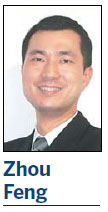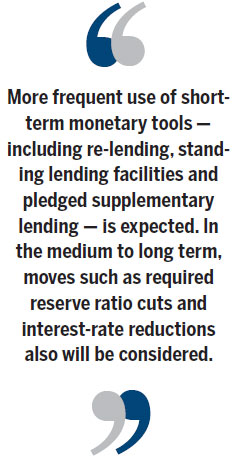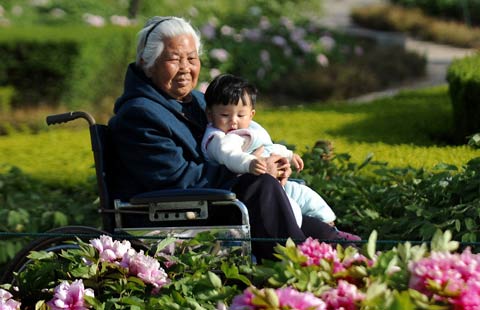Easing into new financial landscape
Updated: 2014-11-07 11:05
By Zhou Feng(China Daily Europe)
|
|||||||||||

Chinese policymakers should keep a cool head and focus on reforms with the end of the US' qe policies
It's official. The United States finally ended its quantitative-easing programs for the past five years. The end of the ultra-loose credit policy will greatly influence the global market, with China, now the world's second-largest economy, bearing the brunt of the policy change, too.
In the post-QE era, the biggest challenge for China is a drain of liquidity. Although the US Federal Reserve has pledged that it will keep the interest rate at a low level for a long time, the end of QE means that global capital will flow from emerging markets to the US for higher returns. Earlier experience has shown that whenever the US tightens its credit policy, emerging markets experience capital outflows associated with depreciation of their currencies and asset price declines.
China has seen this trend. In September, China's exports unexpectedly jumped 15.3 percent year-on-year, beating the previous month's 9.9 percent, with high-value items and the mainland's shipments to Hong Kong noteworthy on the export list. This showed that speculative money, with expectation that the US would end the QE policy, was flowing out of China under the disguise of exports, a common way to bypass the country's controls on cross-border money flows. If outflows persist, China's money market will tighten, especially given the backdrop that foreign investment into China is slowing.
Chinese policymakers will have to cope with the liquidity change by increasing money supply. More frequent use of short-term monetary tools - including re-lending, standing lending facilities and pledged supplementary lending - is expected. In the medium to long term, moves such as required reserve ratio cuts and interest-rate reductions also will be considered.
This will test policymakers' ability to strike a balance between liquidity and the quality of economic growth. China's capital market is underdeveloped, with a not-so-high efficiency of liquidity use. Money often goes to assets such as property and equity markets instead of serving the real economy, basically the manufacturing and service sectors. What Chinese policymakers do is to keep a lid on property and equity markets by tightening the credit supply in an attempt to channel money to the real economy.

Now that the end of QE is certain to pressure Chinese authorities to loosen their monetary policies, the core of the problem is to what extent to loosen.
It is essential for Chinese policymakers to keep a cool head despite the US policy change. They should not shift from their earlier tightening stance.
China has a high savings rate and its social financing is solid. China is not short of money, so the problem is how its large money pool is to be used to help the real economy.
The sensible choice is for China to stay away from across-the-board rate cuts to prevent a revival of property and equity bubbles. But it can resort more often to short-term tools to shore up liquidity when necessary.
The end of the QE policy will also bring some pressure to the internationalization of the Chinese currency. Because the loose monetary policy is gone, the US dollar is expected to appreciate and gain ground in the global market.
In the past five years, the rise of the yuan has been built on a weak dollar. So a rising greenback is sure to prompt investors to change their portfolio by increasing dollar assets. This means the globalization pace of the yuan will slow down a bit in terms of its popularity among foreign currency investors and traders.
The yuan's popularity mostly comes from its rising value, not its convenience of use. China should take this time to rethink its currency strategy. It should slow down the government-backed push for the use of the yuan globally and focus more on fundamental reforms of the foreign exchange system to increase the yuan's convertibility and convenience. Forex investment controls and interest rate reforms should be pressed.
However, the news is not all bad with the end of the US' QE policy.
One notable benefit is the decline of prices of commodities such as oil and iron ore. China has been struggling with high resources prices in the past decade. The decline will help cut production costs, boost consumption power and increase competitiveness of made-in-China products.
The author is a Shanghai-based financial analyst. The views do not necessarily reflect those of China Daily.
(China Daily European Weekly 11/07/2014 page10)
Today's Top News
China, Russia agree on military coop projects
Faster pace set in bid to protect Internet
US, France cite concerns about Iran nuclear talks
China donates $2 million to WHO to combat Ebola
Policy banks to lead Silk Road infrastructure fund
Ukraine's rebel leader sworn in
World Cup-winning captain succeeds coach at Evergrande
Ukraine rebels announce results of 'elections'
Hot Topics
Lunar probe , China growth forecasts, Emission rules get tougher, China seen through 'colored lens', International board,
Editor's Picks

|

|

|

|

|

|





